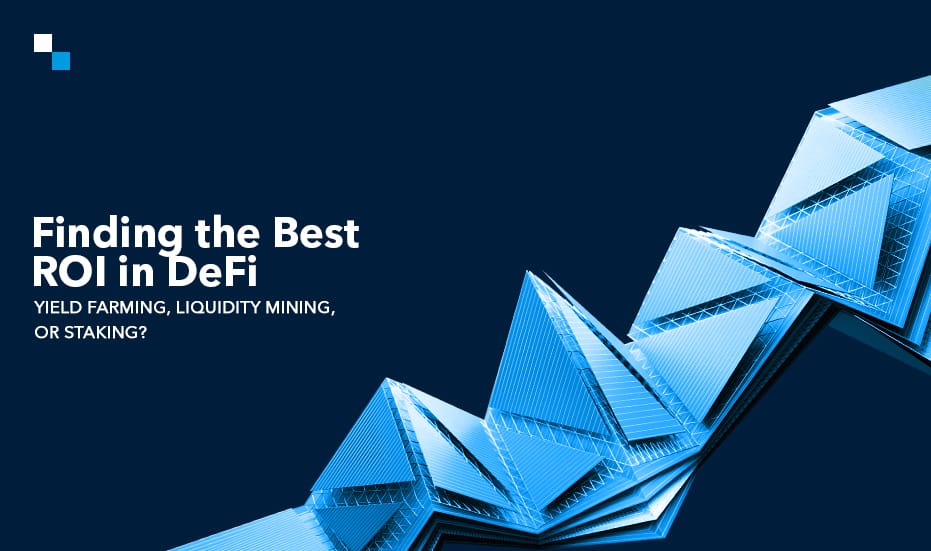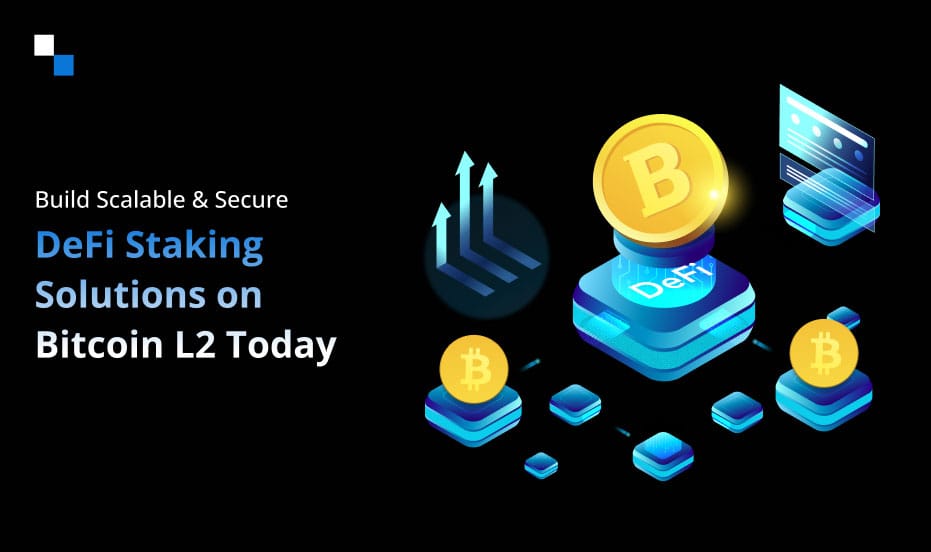
Smart Contract Audit- Combating 8 Types of Security Risks
November 7, 2024
Minima Blockchain Explained: A Deep Dive into a DePIN-Focused Layer 1 Blockchain
November 7, 2024Once we enter the DeFi realm, we try to make strategic investments in order to get the most returns. Here, among the most popular ones are yield farming, liquidity mining, and staking. Each one has its pros and cons. The majority of the investors have been often asking which option is more lucrative.
We would further distinguish between yield farming, liquidity mining, and staking apart from understanding the best yield farming strategy in this article.
Understanding DeFi Yield Farming
Essentially, DeFi yield farming is the process of lending or staking crypto assets for interest or any type of reward. People make returns by providing liquidities to DEXs or lending protocols. Your assets are lent to provide trading or lending that enables returns. Yield farmers regularly shift their holdings between the diverse protocols in a quest to maximize the high annual percentage yields available at times.
Yield farming remains a highly attractive investment opportunity for an investor in 2024, given the average increase across significant DeFi protocols. Some protocols have reached 400% as the highest APY yield farming profit. However, increased risks, such as market volatility and vulnerabilities in smart contracts, are directly related to the expected returns.
What’s Liquidity Mining?
Liquidity mining is a subset of yield farming that only focuses on providing liquidity to DEXs. In this model, contributors place their assets into liquidity pools so users can easily trade cryptocurrencies. The reward received by the liquidity provider for his contribution is either the governance tokens or fees earned from trades within the pool.
While liquidity mining may offer attractive rewards, it is generally considered a riskier activity than regular yield farming because of potential impermanent loss. This loss happens when the value of deposited assets fluctuates significantly when compared to holding them outside the pool.
Staking: A Safer Alternative
Staking is the act of locking up cryptocurrency into a blockchain network for operations, including transaction validation and security. Participants are remunerated for staking, mainly in the form of extra tokens. Compared to yield farming and liquidity mining, staking is deemed less risky and complicated.
Still, staking typically always yields lower than DeFi yield farming or liquidity mining. APYs for staking vary wildly from one blockchain network to another and can depend on the underlying mechanism that the network offers for staking.
Yield Farming vs Liquidity Mining
When we compare yield farming and liquidity mining, we have to consider various factors that include:
- Returns: Yield farming usually gives a higher probable return since it allows individuals to switch between different protocols and optimize yields. Liquidity mining may offer more stable though generally lower returns.
- Risk Profile: Yield farming is more risky due to the volatility of the market as well as susceptibility to smart contract vulnerabilities. Liquidity mining also poses risks in impermanent loss but is considered slightly safer as it is of a less complex nature.
- Complexity: In DeFi yield farming, one has to manage multiple DeFi protocols, and hence requires a good understanding of the same. On the other hand, liquidity mining is quite less complex and is easier for new investors.
- Liquidity Needs: Yield farming involves providing liquidity on multiple platforms. In contrast, liquidity mining focuses on specific pools within DEXs.
Crypto Farming vs Staking
When evaluating crypto farming versus staking, consider these points:
- Investment Strategy: Crypto farming also referred to as yield farming, is the strategy through which one achieves higher returns, by actively managing their assets on different platforms. A staking strategy is less active, which merely targets securing a network for earning rewards.
- Risk vs Reward: Crypto farming can result in super-high profits but at even greater risks related to price volatility and smart contract faults. Staking is much safer but with much lower rewards.
- Time Commitment: Yield farming often requires continuous monitoring of investments and market conditions, while staking can be more passive once assets are locked up.
Best Yield Farming Strategy Components
1. Portfolio Diversification
- Spread assets across multiple protocols
- Mix of stable and volatile pairs
- Balance between farming and staking
- Risk management through position sizing
2. Platform Selection
- Audit status and security track record
- Total Value Locked (TVL)
- Historical APY stability
- Community strength and development activity
3. Token Considerations
- Market capitalization
- Trading volume
- Token utility and tokenomics
- Project fundamentals
Profitability Comparison
Short-term Profitability (1-3 months)
- DeFi yield farming: Highest potential returns but requires active management
- Liquidity mining: Medium to high returns with moderate management
- Staking: Lower but more consistent returns
Long-term Profitability (6+ months)
- Liquidity mining: More sustainable returns through fee accumulation
- Staking: Compound benefits and potential token appreciation
- Yield farming: High variance based on market conditions

Optimal Strategies for Different Investor Profiles
Conservative Investors
- Focus on staking major cryptocurrencies
- Limited liquidity mining with stable pairs
- Emphasis on platform security
- 70% staking, 30% liquidity mining
Moderate Risk Tolerance
- Mix of staking and liquidity mining
- Selected yield farming opportunities
- Focus on established protocols
- 40% liquidity mining, 30% staking, 30% yield farming
Aggressive Investors
- Heavy focus on highest APY yield farming
- Active management of positions
- Multiple platform usage
- 50% yield farming, 30% liquidity mining, 20% staking
Future Considerations
Market Evolution
- Increasing regulation may impact yields
- Platform consolidation affecting opportunities
- Evolution of layer 2 solutions reducing gas fees
- New yield optimization strategies emerging
Technology Improvements
- Cross-chain yield farming opportunities
- Automated yield optimizers
- Enhanced security measures
- Improved user interfaces
Conclusion
While speaking of yield farming vs liquidity mining or crypto farming vs staking, the major focus of investors is on profitability. However, it depends on individual risk tolerance, investment strategy, and market conditions. While DeFi yield farming offers a lot of potential returns through the active management of assets across multiple platforms, there is an increased risk that has to be put into perspective.
Liquidity mining provides easier entry and offers predictable rewards but may not offer as high profitability as that offered by yield farming in some cases. In return, staking remains a more secure option for those who wish to invest with more limited risk and predictable returns.
Investors should analyze the financial goals and risk appetite they possess before selecting one of the strategies. The best yield farming strategy maximizes profits with efficient navigation through the volatile decentralized finance landscape. Antier, a known face in blockchain technology holds proficiency in building DeFi platforms that help investors to gain the maximum profits. Choose us for building exchanges, lending platforms, and more DeFi products. Let’s connect!



